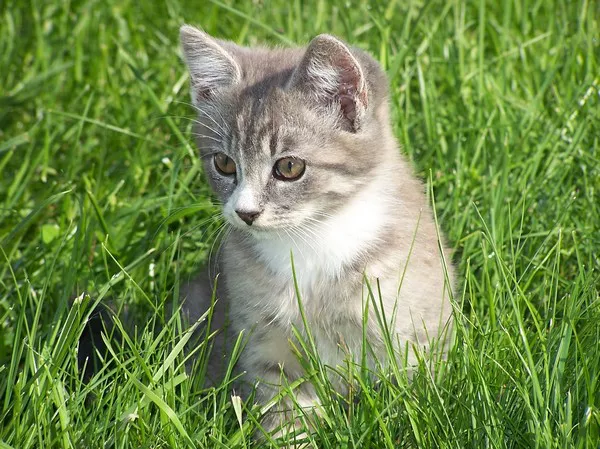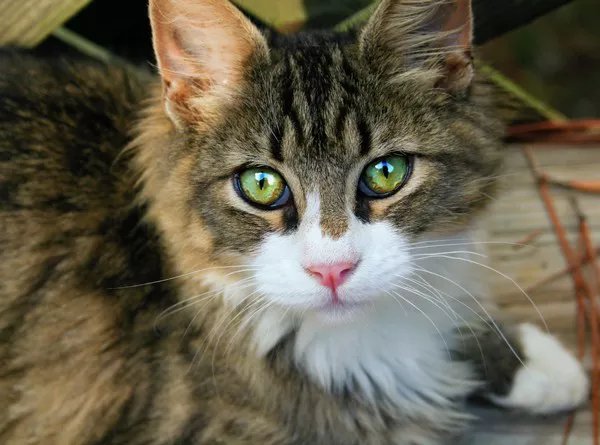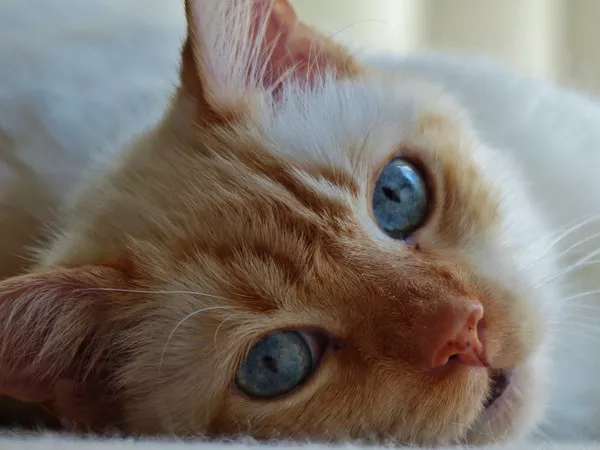As a cat owner, it’s natural to want the best for your feline friend, even when you’re not home. One of the most important aspects of cat care is feeding, as it directly impacts your cat’s overall health and well-being. But what happens when you need to go away, whether for work, travel, or a vacation? How can you ensure your cat’s dietary needs are met, and they continue to enjoy a balanced diet without any disruption?
In this article, we’ll explore various solutions to feed your cat when you’re away. We’ll discuss the significance of maintaining a regular feeding schedule, the challenges involved, and several methods for ensuring your cat is well-fed. From automatic feeders to pet sitters, we’ll cover everything you need to know to keep your cat’s health in check during your absence.
Importance of Maintaining a Regular Feeding Schedule for Cats
Cats, like many pets, require a balanced diet to maintain their health. Regular feeding not only provides them with the necessary nutrients, but it also helps in regulating their digestion and energy levels. Failing to stick to a feeding schedule can lead to various health issues, such as obesity, digestive problems, or anxiety.
For example, feeding your cat at the same time each day helps them develop a sense of security and reduces stress. This routine also ensures that they are not overfed or underfed, as portion sizes are carefully controlled. Without a feeding schedule, your cat may overeat or not receive enough food, both of which can lead to health complications, including obesity and malnutrition.
Challenges of Feeding a Cat When the Owner is Away
While there are many ways to feed a cat in the absence of their owner, each method presents its own set of challenges. Some cats may be more sensitive to change than others, requiring more delicate arrangements to maintain their routine. Others may be picky eaters, making feeding times more complicated, especially if they require wet food or specific dietary preferences.
The main challenges of feeding your cat when you’re away include:
Maintaining a Consistent Schedule: It can be difficult to ensure meals are provided on time without your physical presence.
Proper Portion Control: Overfeeding or underfeeding can cause health issues.
Keeping Wet Food Fresh: Wet food has a limited shelf life, making it challenging to store and serve in a way that preserves its quality.
Managing Special Diets: Cats with specific dietary needs require more attention and care to ensure they are fed properly.
Fortunately, there are many solutions available to address these challenges and ensure that your cat remains well-fed and happy in your absence.
1. Automatic Feeders
Types of Automatic Feeders
Automatic feeders are one of the most convenient and reliable solutions for feeding a cat when you’re away. They work by dispensing a set portion of food at predetermined times, helping to maintain a regular feeding schedule. There are several types of automatic feeders available, each with its own features and benefits.
Gravity Feeders: These are the simplest type of automatic feeders. They work by using gravity to dispense dry food into a bowl as the cat eats. Gravity feeders don’t require electricity or programming but can be less precise in controlling portion sizes. They are ideal for cats that have free access to food throughout the day and don’t require strict portion control.
Electronic Timed Feeders: These feeders allow you to program specific feeding times and portion sizes, offering more control over your cat’s meals. Electronic timed feeders typically have a digital screen for easy programming and may include features such as portion control, multiple feeding times, and the ability to store both dry and wet food. Some models even offer a voice recording option to call your cat to its food.
Features to Consider in Automatic Feeders
When selecting an automatic feeder, it’s important to consider key features that align with your cat’s needs and your preferences:
Portion Control: Accurate portioning ensures that your cat is fed the correct amount of food. Look for feeders that offer adjustable portion sizes.
Programming Options: Choose a model that allows you to set specific feeding times to mimic your regular schedule.
Battery Backup: In case of a power outage, a battery backup ensures the feeder continues to function.
Durability and Easy Cleaning: A high-quality feeder should be easy to clean and resistant to wear and tear.
Recommendations for Automatic Feeders
Some reliable brands and models include:
PetSafe Healthy Pet Simply Feed: An electronic timed feeder that holds up to 24 cups of dry food and features adjustable portions.
Cat Mate C500: A programmable feeder with a five-meal capacity, ideal for both wet and dry food.
SureFeed Microchip Pet Feeder: Suitable for multi-cat households, this feeder opens based on your cat’s microchip, ensuring that only the right cat gets fed.
2. Timed Food Dispensers
Timed food dispensers are an excellent option for providing your cat with a set portion of food at predetermined times. These dispensers are ideal for both wet and dry food. They work by dispensing food through a timed mechanism, ensuring that your cat receives food at the right moment, even when you’re not there.
Setup and Usage
To set up a timed food dispenser:
Fill the Dispenser: Place the appropriate amount of food in the dispenser, ensuring it is the right type (wet or dry) and consistency for your cat.
Program Feeding Times: Use the controls to set the times at which the food should be dispensed.
Monitor Your Cat’s Intake: Keep an eye on your cat’s eating habits to ensure the dispenser is functioning correctly.
Benefits of Timed Dispensers
Convenience: Once programmed, timed dispensers require little maintenance.
Portion Control: Most timed dispensers allow you to control the amount of food dispensed, which helps maintain your cat’s ideal weight.
Consistency: Timed dispensers ensure your cat gets food at the same time every day.
3. Wet Food Solutions
Automatic Wet Food Dispensers
Feeding wet food requires special attention, as it can spoil quickly. Automatic wet food dispensers are designed to store and dispense wet food in a way that minimizes waste and prevents spoilage. Many of these dispensers come with built-in refrigeration or cooling systems to keep food fresh longer.
Ice Packs and Cooling Options
For cats that are used to wet food, keeping it cool during your absence is crucial. You can use ice packs or coolers that fit into the food dispenser to keep the food fresh. Additionally, consider investing in wet food dispensers with cooling compartments designed to maintain optimal temperatures for wet food.
4. Pet Sitters and Friends
Hiring a Pet Sitter
One of the most reliable options when feeding a cat during your absence is hiring a professional pet sitter. Pet sitters not only ensure your cat is fed but also provide companionship and monitor your cat’s health. This service allows you to leave for extended periods without worrying about your cat’s well-being.
Asking Friends or Neighbors
If you prefer a more cost-effective solution, asking a trusted friend or neighbor to feed your cat can also work. When arranging for someone to look after your cat, ensure they are familiar with your cat’s routine and know how much and when to feed them. Make sure they know what to do in case of an emergency, such as if the food runs out or your cat refuses to eat.
5. Prepping Meals in Advance
Pre-portioning Food
For shorter absences, you can prepare your cat’s meals in advance. Pre-portioning their food into separate containers can help ensure that they are fed the right amount at the right time, even if you’re not around. This also makes it easier for someone else to feed your cat without worrying about measuring the portions.
Storage Solutions
To store pre-portion meals, consider using airtight containers or resealable bags to preserve freshness. For wet food, ensure it is sealed properly to prevent spoilage, and refrigerate it immediately.
6. Considerations for Special Diets
Cats with Dietary Restrictions
If your cat has dietary restrictions or needs a specific type of food, feeding them while you’re away requires additional preparation. Work closely with your vet to determine the best feeding plan, and make sure whoever is looking after your cat understands the importance of adhering to their special diet.
Medication and Supplements
For cats that require medication or supplements with their food, ensure that the feeder or pet sitter is aware of the specific instructions. You may also need to provide the necessary medications ahead of time, ensuring they are administered on time.
7. Monitoring and Check-ins
Pet Cameras
Pet cameras are an excellent way to monitor your cat’s feeding schedule and behavior while you’re away. Many pet cameras allow you to check in on your cat remotely and even speak to them through a two-way audio system. Some models can even dispense treats or allow you to check if they’re eating properly.
Regular Updates
If you’re relying on a pet sitter or friend, ask for regular updates on how your cat is doing. This will give you peace of mind knowing that your cat is being properly cared for.
Conclusion
Feeding your cat when you are away requires careful planning to ensure that their feeding schedule is maintained and their nutritional needs are met. Whether using automatic feeders, timed dispensers, or hiring a pet sitter, there are many options available to ensure your cat remains healthy and happy. By considering their specific needs, such as dietary restrictions or the type of food they prefer, you can find the best solution for feeding your cat in your absence while ensuring their overall cat health is protected.
Related Topics



























